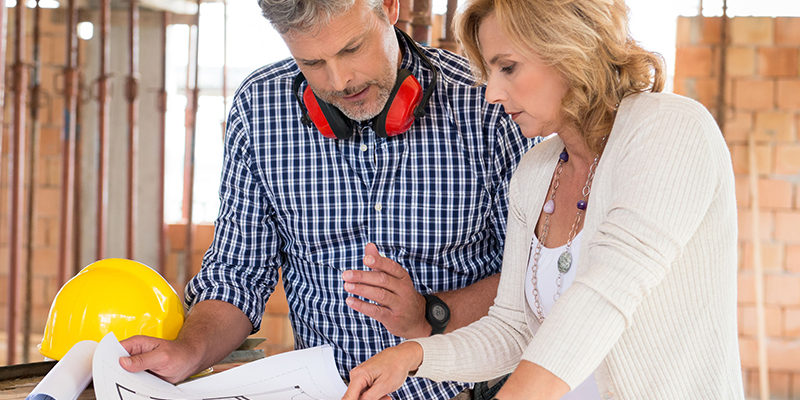The shortage of available labor in construction has been well-documented. According to a January 2018 Associated General Contractors of America (AGC) and Sage Construction and Real Estate survey of more than 1,000 firms nationwide, an overwhelming majority (82%) expect it will remain difficult or become even harder to recruit and hire qualified workers this year, up from 76% in 2017.
With strong industry momentum, contractors are hiring from an increasingly diverse pool of workers, and in some cases, without the opportunity to test their skills. In construction, a lack of experience can mean increased risks of injury or fatality; a recent Center for Construction Research and Training (CPWR) study found that those under age 20 were at a high risk of experiencing both fatal and nonfatal incidents.
Changing workforce and market conditions are putting a renewed focus on establishing and maintaining strong safety programs at the jobsite. Construction companies are prioritizing training and embracing the latest safety technologies to boost communication, identify risky behaviors or trends, and promote safety at all levels of a project and organization.
Create a Rock Solid Safety Foundation
Building the next generation of safety leaders starts with examining and refining the current generation of safety initiatives. Your organization should have a plan for staying up-to-date with changing OSHA safety regulations and industry guidelines and communicating that information across decision-makers, departments, and project sites. Workers should be up-to-date with their certifications, and as an organization, you should offer on-going professional and safety development and training.
Site safety supervisors should pay close attention to the “Fatal Four” – falls, electrical hazards, struck-by hazards, and caught-in/between hazards – and work to eliminate those hazards wherever possible. Tools like the Spot-r Clip, for example, send automatic, location-based safety notifications if a worker falls on site, improving response time and reducing the risk of compounding injuries. In the case of an electrical hazard, the injured individual or nearby workers could press the wearable Clip’s push-button to automatically alert supervisors to a situation that requires help.
Engage Your Workforce
The Dodge Data & Analytics SmartMarket Report dives into safety culture indicators, such as how involved workers are in jobsite safety and how often and how effectively a company communicates with its workers regarding safety. 92% of contractors survey reported “at least partially” involving their workers in safety and health planning. Still, only 30% of respondents said their workers are involved with planning more than 70% of the time, and another 30% report that their workers are involved less than 25% of the time, leaving much room for improvement.
Involving workers in safety and health planning goals, initiatives and strategies gives them an opportunity to develop their safety education and leadership skills. When you are able to empower – and activate – your workers to identify hazards and risks, report issues, and look out for each other at the jobsite, you create a team of safety leaders that others will follow and learn from. Culture is contagious, and safety is a combination of what companies say, what workers see on site, and what tools individuals are provided with to build safer and smarter.
Strong safety supervisors will prioritize continuous improvement – always driving towards the goal of zero incidents – and will engage their workers in safety on a daily basis. While staying on schedule and on budget can feel like the most pressing task, there is no greater priority than ensuring that each worker returns home safely. Remembering the human component at the heart of the built environment goes a long way towards foster a positive safety culture that attracts – and transfers over to – the next generation of workers.
Support Next Generation Initiatives
Furthermore, as contractors, trade organizations, and schools work together to attract younger workers to the trades, schools are taking the lead by promoting cutting-edge construction safety degrees. By focusing on technology in the industry – Building Information Modeling (BIM), wearable and sensor technology, data analytics – and offering degrees in construction safety management, the industry can help strengthen the skilled labor pipeline. Keene State College in New Hampshire, for example, will begin to offer a construction safety sciences degree program, the first of its kind in the United States. In an industry defined by tight margins, reducing injuries and illnesses helps workers feel secure, valued, and motivated – and also helps reduce direct and indirect safety costs. OSHA says that companies (across industries) spend roughly $170 billion annually on costs related to injuries and illnesses, but with comprehensive safety programs, that number can be reduced by between 20-40%. What’s more, companies lose $60 billion in lost productivity due to injuries and illnesses.
Although the skilled labor shortage is far from over, contractors, educational institutions, trade organizations, and industry partners are recognizing the importance of joining forces to raise the industry’s profile. Safety is fundamental to this transformation. By protecting workers, and empowering them with new tools to participate in site safety and develop their skills, younger workers are getting excited about a career in the trades. Construction is replete with opportunity and by prioritizing cutting-edge safety, technology, and green initiatives – to name a few – the industry can build a strong foundation and positive example that future generations will follow and improve upon.

